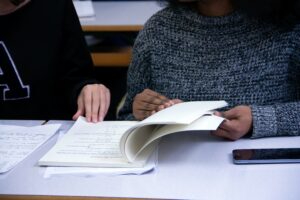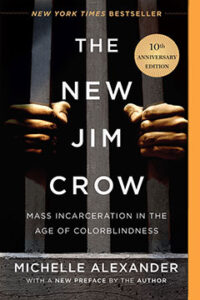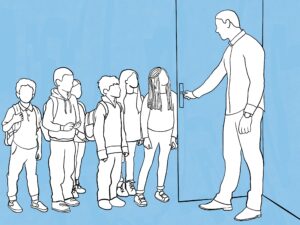Caine’s Arcade
 Watching a popular video clip on YouTube typically causes me to laugh at a clever bit of irony or to groan at some ridiculous slapstick. More often than not, clips involve cute babies, funny pets, or somebody falling down and being embarrassed – far from intellectually challenging. I recently watched a video that was sentimental, but also thought provoking. Caine’s Arcade features Caine Monroy, a nine year old boy who lives in an East Los Angeles. To keep himself busy while his dad works in his used auto parts store, Caine spends months building an arcade out of cardboard boxes and miscellaneous found objects and dreams of the day when customers will come and play in his arcade. Nirvin Mullick just happens to come into the shop in search of an auto part, notices this little boy and his arcade, and becomes not only the first customer in Caine’s Arcade, but an advocate for creative kids everywhere. Remarkably, Nirvin is a film maker and skillful in the use of social media. He organizes a flash mob to bring customers into Caine’s Arcade and uses Facebook to create interest, which draws in television media and a lot of exposure through reddit. Nirvin films Caine before the surprise flash mob and captures his reaction when he sees the crowd and interacts with a throng of eager customers. The film was posted to the internet. (My viewing was hit # 3,086,106 on YouTube.) Continue reading “Caine’s Arcade”
Watching a popular video clip on YouTube typically causes me to laugh at a clever bit of irony or to groan at some ridiculous slapstick. More often than not, clips involve cute babies, funny pets, or somebody falling down and being embarrassed – far from intellectually challenging. I recently watched a video that was sentimental, but also thought provoking. Caine’s Arcade features Caine Monroy, a nine year old boy who lives in an East Los Angeles. To keep himself busy while his dad works in his used auto parts store, Caine spends months building an arcade out of cardboard boxes and miscellaneous found objects and dreams of the day when customers will come and play in his arcade. Nirvin Mullick just happens to come into the shop in search of an auto part, notices this little boy and his arcade, and becomes not only the first customer in Caine’s Arcade, but an advocate for creative kids everywhere. Remarkably, Nirvin is a film maker and skillful in the use of social media. He organizes a flash mob to bring customers into Caine’s Arcade and uses Facebook to create interest, which draws in television media and a lot of exposure through reddit. Nirvin films Caine before the surprise flash mob and captures his reaction when he sees the crowd and interacts with a throng of eager customers. The film was posted to the internet. (My viewing was hit # 3,086,106 on YouTube.) Continue reading “Caine’s Arcade”


 For students returning to school this fall lunch in the cafeteria will look different. That’s because the upcoming school year marks the beginning of the new
For students returning to school this fall lunch in the cafeteria will look different. That’s because the upcoming school year marks the beginning of the new 
 In my second year as a doctoral student, I worked with a professor who was finishing his first book. Among my many tasks was to help him write footnotes for his first chapter. This is how I was introduced to Rosina Lippi-Green’s English with an Accent: Language, Ideology and Discrimination in the United States (1997). Although a bit dated, many of the points she makes are still salient as we consider creating and implementing effective policies to assist English Language Learners (ELLs).
In my second year as a doctoral student, I worked with a professor who was finishing his first book. Among my many tasks was to help him write footnotes for his first chapter. This is how I was introduced to Rosina Lippi-Green’s English with an Accent: Language, Ideology and Discrimination in the United States (1997). Although a bit dated, many of the points she makes are still salient as we consider creating and implementing effective policies to assist English Language Learners (ELLs).  Yesterday was the last day of school for my first grade son. He came home with a backpack full of journals filled with writing, unsharpened pencils, jackets I thought were gone forever, and a bag of candy from his teacher. His younger sister will go to Kindergarten in the fall and she is full of questions about school. She asked him what the best thing about first grade is. His reply made me both smile and frown as comments from older brothers to younger sisters often do. He said, “My teacher, of course. She is cool and nice. But she is going to a new school, so she won’t be your teacher.” My daughter looked a bit sad, but then he said, “You know school is a nice place to go. There’s recess and P.E. and music. And when you do have to learn stuff the teachers make it fun, so you don’t want to leave. Plus you get rewards if you are good. I can show you how to act good.” I am not sure what exactly that means, but I am choosing to be proud of it anyway.
Yesterday was the last day of school for my first grade son. He came home with a backpack full of journals filled with writing, unsharpened pencils, jackets I thought were gone forever, and a bag of candy from his teacher. His younger sister will go to Kindergarten in the fall and she is full of questions about school. She asked him what the best thing about first grade is. His reply made me both smile and frown as comments from older brothers to younger sisters often do. He said, “My teacher, of course. She is cool and nice. But she is going to a new school, so she won’t be your teacher.” My daughter looked a bit sad, but then he said, “You know school is a nice place to go. There’s recess and P.E. and music. And when you do have to learn stuff the teachers make it fun, so you don’t want to leave. Plus you get rewards if you are good. I can show you how to act good.” I am not sure what exactly that means, but I am choosing to be proud of it anyway.  Thank you, Deborah Meier, for being able and willing to reveal your own racism! As Meier tells Diane Ravitch in the
Thank you, Deborah Meier, for being able and willing to reveal your own racism! As Meier tells Diane Ravitch in the  I recently observed a conference room full of superintendents sitting in complete silence as they pondered a challenging question, “Should teachers be required to participate in professional learning?” Richard Elmore posed this question, and after what seemed like an uncomfortable amount of wait-time, a superintendent responded in an uncertain voice, “Yes.” The audience was engaged in learning how to improve student learning through the implementation of the Instructional Rounds approach and Elmore was pressing them to think about how to advance reforms that are likely to make a difference in improving student learning.
I recently observed a conference room full of superintendents sitting in complete silence as they pondered a challenging question, “Should teachers be required to participate in professional learning?” Richard Elmore posed this question, and after what seemed like an uncomfortable amount of wait-time, a superintendent responded in an uncertain voice, “Yes.” The audience was engaged in learning how to improve student learning through the implementation of the Instructional Rounds approach and Elmore was pressing them to think about how to advance reforms that are likely to make a difference in improving student learning. 
 “Whatever we do to strengthen and elevate the teaching profession, we should bear in mind that reforms that fail to heed the voice of teachers are doomed.”
“Whatever we do to strengthen and elevate the teaching profession, we should bear in mind that reforms that fail to heed the voice of teachers are doomed.”